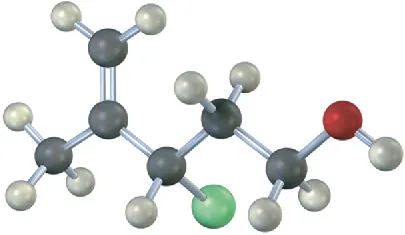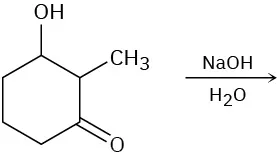11.18: Additional Problems
- Page ID
- 459793
\( \newcommand{\vecs}[1]{\overset { \scriptstyle \rightharpoonup} {\mathbf{#1}} } \)
\( \newcommand{\vecd}[1]{\overset{-\!-\!\rightharpoonup}{\vphantom{a}\smash {#1}}} \)
\( \newcommand{\id}{\mathrm{id}}\) \( \newcommand{\Span}{\mathrm{span}}\)
( \newcommand{\kernel}{\mathrm{null}\,}\) \( \newcommand{\range}{\mathrm{range}\,}\)
\( \newcommand{\RealPart}{\mathrm{Re}}\) \( \newcommand{\ImaginaryPart}{\mathrm{Im}}\)
\( \newcommand{\Argument}{\mathrm{Arg}}\) \( \newcommand{\norm}[1]{\| #1 \|}\)
\( \newcommand{\inner}[2]{\langle #1, #2 \rangle}\)
\( \newcommand{\Span}{\mathrm{span}}\)
\( \newcommand{\id}{\mathrm{id}}\)
\( \newcommand{\Span}{\mathrm{span}}\)
\( \newcommand{\kernel}{\mathrm{null}\,}\)
\( \newcommand{\range}{\mathrm{range}\,}\)
\( \newcommand{\RealPart}{\mathrm{Re}}\)
\( \newcommand{\ImaginaryPart}{\mathrm{Im}}\)
\( \newcommand{\Argument}{\mathrm{Arg}}\)
\( \newcommand{\norm}[1]{\| #1 \|}\)
\( \newcommand{\inner}[2]{\langle #1, #2 \rangle}\)
\( \newcommand{\Span}{\mathrm{span}}\) \( \newcommand{\AA}{\unicode[.8,0]{x212B}}\)
\( \newcommand{\vectorA}[1]{\vec{#1}} % arrow\)
\( \newcommand{\vectorAt}[1]{\vec{\text{#1}}} % arrow\)
\( \newcommand{\vectorB}[1]{\overset { \scriptstyle \rightharpoonup} {\mathbf{#1}} } \)
\( \newcommand{\vectorC}[1]{\textbf{#1}} \)
\( \newcommand{\vectorD}[1]{\overrightarrow{#1}} \)
\( \newcommand{\vectorDt}[1]{\overrightarrow{\text{#1}}} \)
\( \newcommand{\vectE}[1]{\overset{-\!-\!\rightharpoonup}{\vphantom{a}\smash{\mathbf {#1}}}} \)
\( \newcommand{\vecs}[1]{\overset { \scriptstyle \rightharpoonup} {\mathbf{#1}} } \)
\( \newcommand{\vecd}[1]{\overset{-\!-\!\rightharpoonup}{\vphantom{a}\smash {#1}}} \)
\(\newcommand{\avec}{\mathbf a}\) \(\newcommand{\bvec}{\mathbf b}\) \(\newcommand{\cvec}{\mathbf c}\) \(\newcommand{\dvec}{\mathbf d}\) \(\newcommand{\dtil}{\widetilde{\mathbf d}}\) \(\newcommand{\evec}{\mathbf e}\) \(\newcommand{\fvec}{\mathbf f}\) \(\newcommand{\nvec}{\mathbf n}\) \(\newcommand{\pvec}{\mathbf p}\) \(\newcommand{\qvec}{\mathbf q}\) \(\newcommand{\svec}{\mathbf s}\) \(\newcommand{\tvec}{\mathbf t}\) \(\newcommand{\uvec}{\mathbf u}\) \(\newcommand{\vvec}{\mathbf v}\) \(\newcommand{\wvec}{\mathbf w}\) \(\newcommand{\xvec}{\mathbf x}\) \(\newcommand{\yvec}{\mathbf y}\) \(\newcommand{\zvec}{\mathbf z}\) \(\newcommand{\rvec}{\mathbf r}\) \(\newcommand{\mvec}{\mathbf m}\) \(\newcommand{\zerovec}{\mathbf 0}\) \(\newcommand{\onevec}{\mathbf 1}\) \(\newcommand{\real}{\mathbb R}\) \(\newcommand{\twovec}[2]{\left[\begin{array}{r}#1 \\ #2 \end{array}\right]}\) \(\newcommand{\ctwovec}[2]{\left[\begin{array}{c}#1 \\ #2 \end{array}\right]}\) \(\newcommand{\threevec}[3]{\left[\begin{array}{r}#1 \\ #2 \\ #3 \end{array}\right]}\) \(\newcommand{\cthreevec}[3]{\left[\begin{array}{c}#1 \\ #2 \\ #3 \end{array}\right]}\) \(\newcommand{\fourvec}[4]{\left[\begin{array}{r}#1 \\ #2 \\ #3 \\ #4 \end{array}\right]}\) \(\newcommand{\cfourvec}[4]{\left[\begin{array}{c}#1 \\ #2 \\ #3 \\ #4 \end{array}\right]}\) \(\newcommand{\fivevec}[5]{\left[\begin{array}{r}#1 \\ #2 \\ #3 \\ #4 \\ #5 \\ \end{array}\right]}\) \(\newcommand{\cfivevec}[5]{\left[\begin{array}{c}#1 \\ #2 \\ #3 \\ #4 \\ #5 \\ \end{array}\right]}\) \(\newcommand{\mattwo}[4]{\left[\begin{array}{rr}#1 \amp #2 \\ #3 \amp #4 \\ \end{array}\right]}\) \(\newcommand{\laspan}[1]{\text{Span}\{#1\}}\) \(\newcommand{\bcal}{\cal B}\) \(\newcommand{\ccal}{\cal C}\) \(\newcommand{\scal}{\cal S}\) \(\newcommand{\wcal}{\cal W}\) \(\newcommand{\ecal}{\cal E}\) \(\newcommand{\coords}[2]{\left\{#1\right\}_{#2}}\) \(\newcommand{\gray}[1]{\color{gray}{#1}}\) \(\newcommand{\lgray}[1]{\color{lightgray}{#1}}\) \(\newcommand{\rank}{\operatorname{rank}}\) \(\newcommand{\row}{\text{Row}}\) \(\newcommand{\col}{\text{Col}}\) \(\renewcommand{\row}{\text{Row}}\) \(\newcommand{\nul}{\text{Nul}}\) \(\newcommand{\var}{\text{Var}}\) \(\newcommand{\corr}{\text{corr}}\) \(\newcommand{\len}[1]{\left|#1\right|}\) \(\newcommand{\bbar}{\overline{\bvec}}\) \(\newcommand{\bhat}{\widehat{\bvec}}\) \(\newcommand{\bperp}{\bvec^\perp}\) \(\newcommand{\xhat}{\widehat{\xvec}}\) \(\newcommand{\vhat}{\widehat{\vvec}}\) \(\newcommand{\uhat}{\widehat{\uvec}}\) \(\newcommand{\what}{\widehat{\wvec}}\) \(\newcommand{\Sighat}{\widehat{\Sigma}}\) \(\newcommand{\lt}{<}\) \(\newcommand{\gt}{>}\) \(\newcommand{\amp}{&}\) \(\definecolor{fillinmathshade}{gray}{0.9}\)Visualizing Chemistry
(b)
(c)
From what alkyl bromide was the following alkyl acetate made by SN2 reaction? Write the reaction, showing all stereochemistry.

Assign R or S configuration to the following molecule, write the product you would expect from SN2 reaction with NaCN, and assign R or S configuration to the product (green = Cl):

Assign R or S configuration to the following molecule, write the product you would expect from SN2 reaction with NaCN, and assign R or S configuration to the product (green = Cl):
Draw the structure and assign Z or E stereochemistry to the product you expect from E2 reaction of the following molecule with NaOH (green = Cl):
Mechanism Problems
 (b)
(b)
 (c)
(c)
 (d)
(d)

Problem 11-26
Show the mechanism for each of the following reactions. What do the mechanisms have in common? Why?
(a)
 (b)
(b)
 (c)
(c)

Problem 11-27
Predict the product(s) for each of the following elimination reactions. In each case show the mechanism. What do the mechanisms have in common? Why?
(a)
 (b)
(b)
 (c)
(c)

Problem 11-28
Predict the product(s) for each of the following elimination reactions. In each case show the mechanism. What do the mechanisms have in common? Why?
(a)
 (b)
(b)
 (c)
(c)

Problem 11-29
Predict the product(s) for each of the following elimination reactions. In each case show the mechanism. What do the mechanisms have in common? Why?
(a)
 (b)
(b)
 (c)
(c)

Problem 11-30
Predict the product of each of the following reactions, and indicate if the mechanism is likely to be SN1, SN2, E1, E2, or E1cB.
(a)
 (b)
(b)
 (c)
(c)
 (d)
(d)

Problem 11-31
We saw in Section 8.7 that bromohydrins are converted into epoxides when treated with base. Propose a mechanism, using curved arrows to show the electron flow.
The following tertiary alkyl bromide does not undergo a nucleophilic substitution reaction by either SN1 or SN2 mechanisms. Explain.
Metabolism of S-adenosylhomocysteine (Section 11.6) involves the following sequence. Propose a mechanism for the second step.
Reaction of iodoethane with CN– yields a small amount of isonitrile, CH3CH2N
One step in the urea cycle for ridding the body of ammonia is the conversion of argininosuccinate to the amino acid arginine plus fumarate. Propose a mechanism for the reaction, and show the structure of arginine.
Methyl esters (RCO2CH3) undergo a cleavage reaction to yield carboxylate ions plus iodomethane on heating with LiI in dimethylformamide:
The following evidence has been obtained: (1) The reaction occurs much faster in DMF than in ethanol. (2) The corresponding ethyl ester (RCO2CH2CH3) cleaves approximately 10 times more slowly than the methyl ester. Propose a mechanism for the reaction. What other kinds of experimental evidence could you gather to support your hypothesis?
SN2 reactions take place with inversion of configuration, and SN1 reactions take place with racemization. The following substitution reaction, however, occurs with complete retention of configuration. Propose a mechanism. (Hint: two inversions = retention.)
Propose a mechanism for the following reaction, an important step in the laboratory synthesis of proteins:
Nucleophilic Substitution Reactions
Draw all isomers of C4H9Br, name them, and arrange them in order of decreasing reactivity in the SN2 reaction.
The following Walden cycle has been carried out: Explain the results, and indicate where inversion occurs.
N2 reaction with OH–? (a)
CH3Br or CH3I–NH2 or NH3
N2 reaction of 1-iodo-2-methylbutane with cyanide ion? (a)
The CN– concentration is halved, and the 1-iodo-2-methylbutane concentration is doubled.The concentration of the halide is tripled.
 (b)
(b)
 (c)
(c)
 (d)
(d)

The SN2 displacement by I– on CH3Cl or on CH3OTos
The SN2 displacement by CH3CO2– on bromoethane or on bromocyclohexaneThe SN2 displacement by I– on CH3Cl or on CH3OTos
R)-2-bromooctane: (a)
–CN(R)-2-Bromooctane undergoes racemization to give (±)-2-bromooctane when treated with NaBr in dimethyl sulfoxide. Explain.
Elimination Reactions
1-Chloro-1,2-diphenylethane can undergo E2 elimination to give either cis- or trans-1,2-diphenylethylene (stilbene). Draw Newman projections of the reactive conformations leading to both possible products, and suggest a reason why the trans alkene is the major product. Predict the major alkene product of the following E1 reaction: General Problems
Problem 11-56
Order each of the following sets of compounds with respect to SN1 reactivity:
(a)
Problem 11-57
Order each of the following sets of compounds with respect to SN2 reactivity:
(a)
Problem 11-58
Predict the major product(s) of each of the following reactions. Identify those reactions where you would expect the product mixture to rotate plane-polarized light.
(a)
Reaction of the following S tosylate with cyanide ion yields a nitrile product that also has S stereochemistry. Explain. Ethers can often be prepared by SN2 reaction of alkoxide ions, RO–, with alkyl halides. Suppose you wanted to prepare cyclohexyl methyl ether. Which of the following two possible routes would you choose? Explain. How can you explain the fact that trans-1-bromo-2-methylcyclohexane yields the non-Zaitsev elimination product 3-methylcyclohexene on treatment with base? Predict the product(s) of the following reaction, indicating stereochemistry where necessary: Alkynes can be made by dehydrohalogenation of vinylic halides in a reaction that is essentially an E2 process. In studying the stereochemistry of this elimination, it was found that (Z)-2-chloro-2-butenedioic acid reacts 50 times as fast as the corresponding E isomer. What conclusion can you draw about the stereochemistry of eliminations in vinylic halides? How does this result compare with eliminations of alkyl halides?
(S)-2-Butanol slowly racemizes on standing in dilute sulfuric acid. Explain. Reaction of HBr with (R)-3-methyl-3-hexanol leads to racemic 3-bromo-3-methylhexane. Explain. Treatment of 1-bromo-2-deuterio-2-phenylethane with strong base leads to a mixture of deuterated and nondeuterated phenylethylenes in an approximately 7 : 1 ratio. Explain. Although anti periplanar geometry is preferred for E2 reactions, it isn’t absolutely necessary. The following deuterated bromo compound reacts with strong base to yield an undeuterated alkene. A syn elimination has occurred. Make a molecular model of the reactant, and explain the result. When a primary alcohol is treated with p-toluenesulfonyl chloride at room temperature in the presence of an organic base such as pyridine, a tosylate is formed. When the same reaction is carried out at higher temperature, an alkyl chloride is often formed. Explain. The amino acid methionine is formed by a methylation reaction of homocysteine with N-methyltetrahydrofolate. The stereochemistry of the reaction has been probed by carrying out the transformation using a donor with a “chiral methyl group,” which contains protium (H), deuterium (D), and tritium (T) isotopes of hydrogen. Does the methylation reaction occur with inversion or retention of configuration? Amines are converted into alkenes by a two-step process called the Hofmann elimination. SN2 reaction of the amine with an excess of CH3I in the first step yields an intermediate that undergoes E2 reaction when treated with silver oxide as base. Pentylamine, for example, yields 1-pentene. Propose a structure for the intermediate, and explain why it readily undergoes elimination.An alkyl halide that gives a mixture of three alkenes on E2 reaction
NaNH2
There are eight diastereomers of 1,2,3,4,5,6-hexachlorocyclohexane. Draw each in its more stable chair conformation. One isomer loses HCl in an E2 reaction nearly 1000 times more slowly than the others. Which isomer reacts so slowly, and why?
(b)
(c)
(b)
(c)
(b)
(c)
(b)
(c)
(b)
(c)
(b)
(c)
Propose a structure for an alkyl halide that gives only (E)-3-methyl-2-phenyl-2-pentene on E2 elimination. Make sure you indicate the stereochemistry.
The reaction of 1-chlorooctane with CH3CO2– to give octyl acetate is greatly accelerated by adding a small quantity of iodide ion. Explain.
Compound X is optically inactive and has the formula C16H16Br2. On treatment with strong base, X gives hydrocarbon Y, C16H14. Compound Y absorbs 2 equivalents of hydrogen when reduced over a palladium catalyst and reacts with ozone to give two fragments. One fragment, Z, is an aldehyde with formula C7H6O. The other fragment is glyoxal, (CHO)2. Write the reactions involved, and suggest structures for X, Y, and Z. What is the stereochemistry of X?
The antipsychotic drug flupentixol is prepared by the following scheme:
(a)
What alkyl chloride B reacts with amine A to form C?
(b)
Compound C is treated with SOCl2, and the product is allowed to react with magnesium metal to give a Grignard reagent D. What is the structure of D?
(c)
We’ll see in Section 19.7 that Grignard reagents add to ketones, such as E, to give tertiary alcohols, such as F. Because of the newly formed chirality center, compound F exists as a pair of enantiomers. Draw both, and assign R,S configurations.
(d)
Two stereoisomers of flupentixol are subsequently formed from F, but only one is shown. Draw the other isomer, and identify the type of stereoisomerism.


